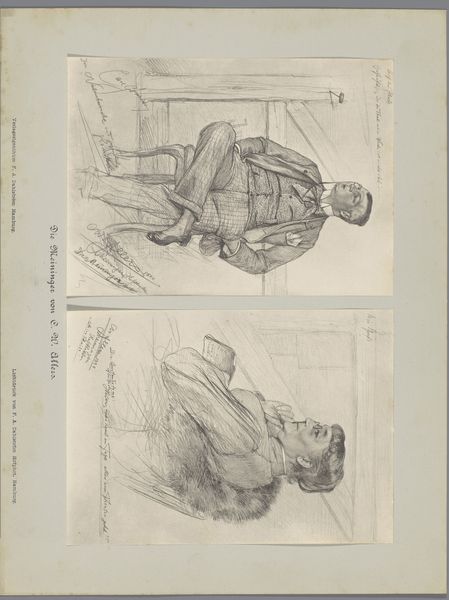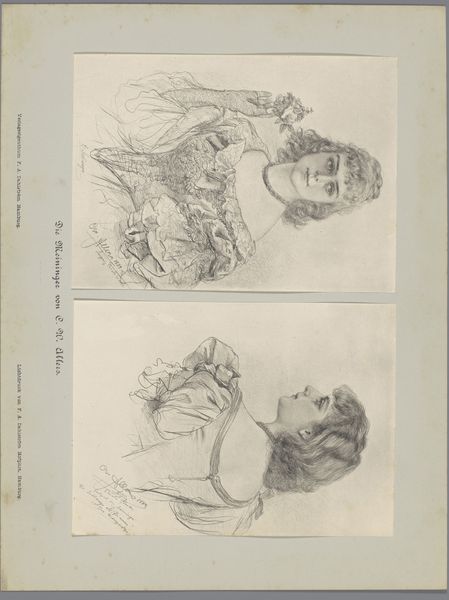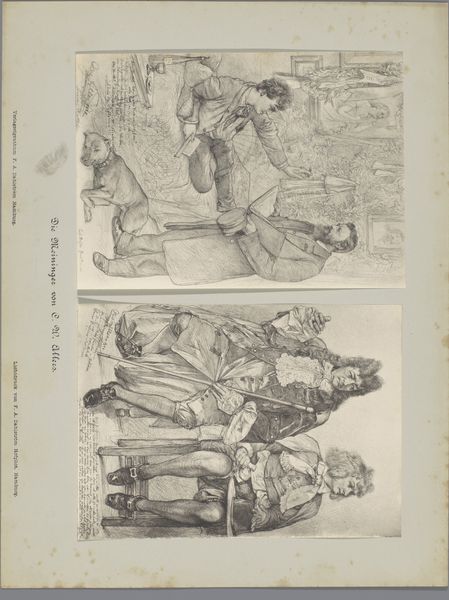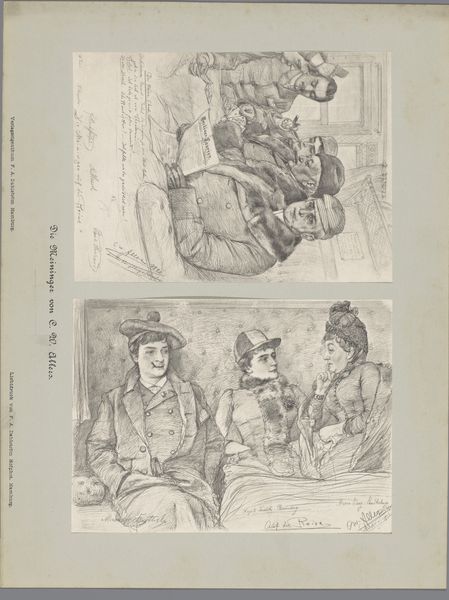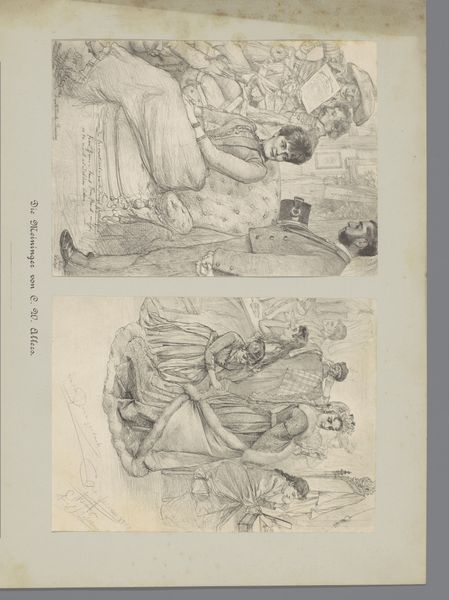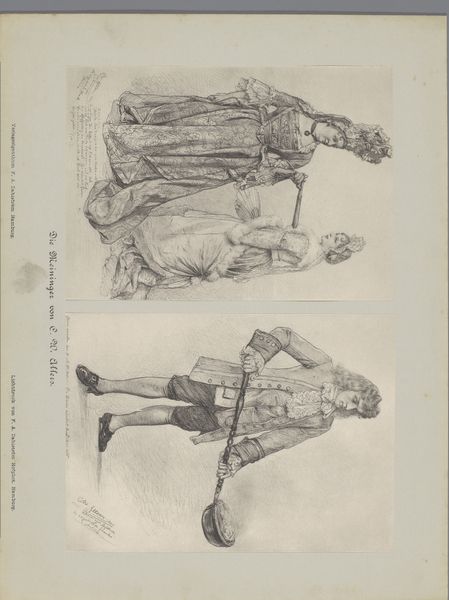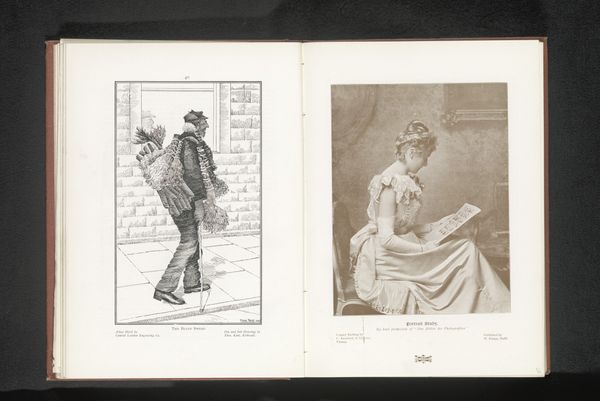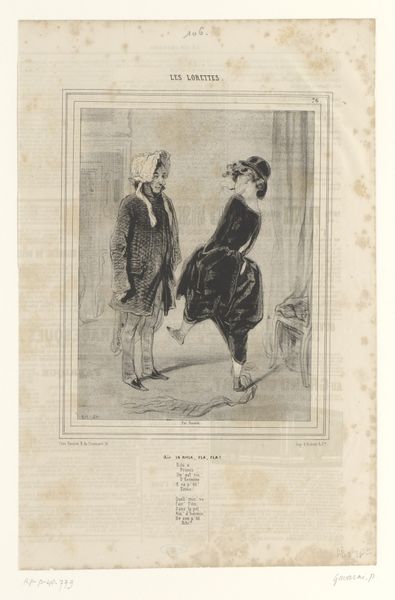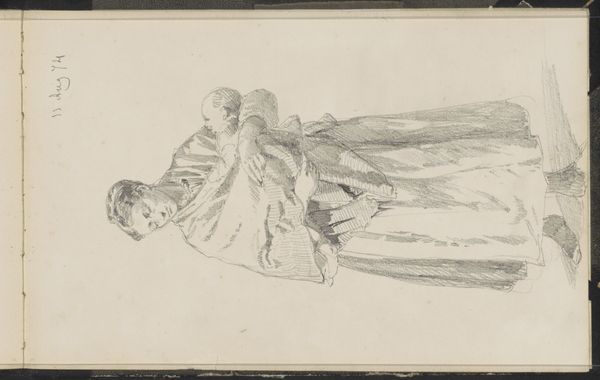
Twee fotoreproducties van tekeningen, voorstellende een portret van een acteur in Slavisch kostuum en een portret van een acteur in monnikskostuum 1890
0:00
0:00
drawing, pencil, graphite
#
portrait
#
drawing
#
pencil sketch
#
figuration
#
pencil
#
graphite
#
genre-painting
#
academic-art
Dimensions: height 237 mm, width 317 mm
Copyright: Rijks Museum: Open Domain
Editor: We’re looking at “Twee fotoreproducties van tekeningen, voorstellende een portret van een acteur in Slavisch kostuum en een portret van een acteur in monnikskostuum,” two drawings by F.A. Dahlström from 1890, rendered in pencil. They seem to explore two very distinct characters. How would you approach analysing these portraits? Curator: Immediately, I'm drawn to the artist's manipulation of line and value to define form and character. Notice the distinct textures achieved through varying pencil strokes: the soft fur trim against the harder metal of the sword. Consider the density of the shading – how does it contribute to the sense of weight and volume in each figure? Editor: The shading is indeed quite different between the two. The Slavic actor seems more detailed, almost imposing, whereas the monk appears softer, perhaps more contemplative. Is that intentional, do you think? Curator: Intention is, of course, speculative, but the compositional elements speak for themselves. Observe the diagonal dynamism in the Slavic actor's pose, contrasting with the more static, horizontal orientation of the monk. This difference creates distinct moods, doesn’t it? What visual cues establish those differing emotions, regardless of whom each depicts? Editor: That’s an astute point. I notice how the actor's upward glance and intricate costume, and the monk's downward gaze and simple robe, definitely reinforce their character types. I was thinking that without such stark juxtapositions I'd respond very differently to these pieces! Curator: Precisely. The visual contrast itself becomes the narrative. We see this with formal features throughout the images. The texture, the values… even the directions of lines give distinct interpretations that build an experience of both character and place, if you will. Editor: So, regardless of who the subjects were in life, we get a sense of meaning solely through form and style, even without biographical context. Curator: Yes, indeed. And these features allow us a way to truly decode Dahlström’s work. Thank you.
Comments
No comments
Be the first to comment and join the conversation on the ultimate creative platform.
